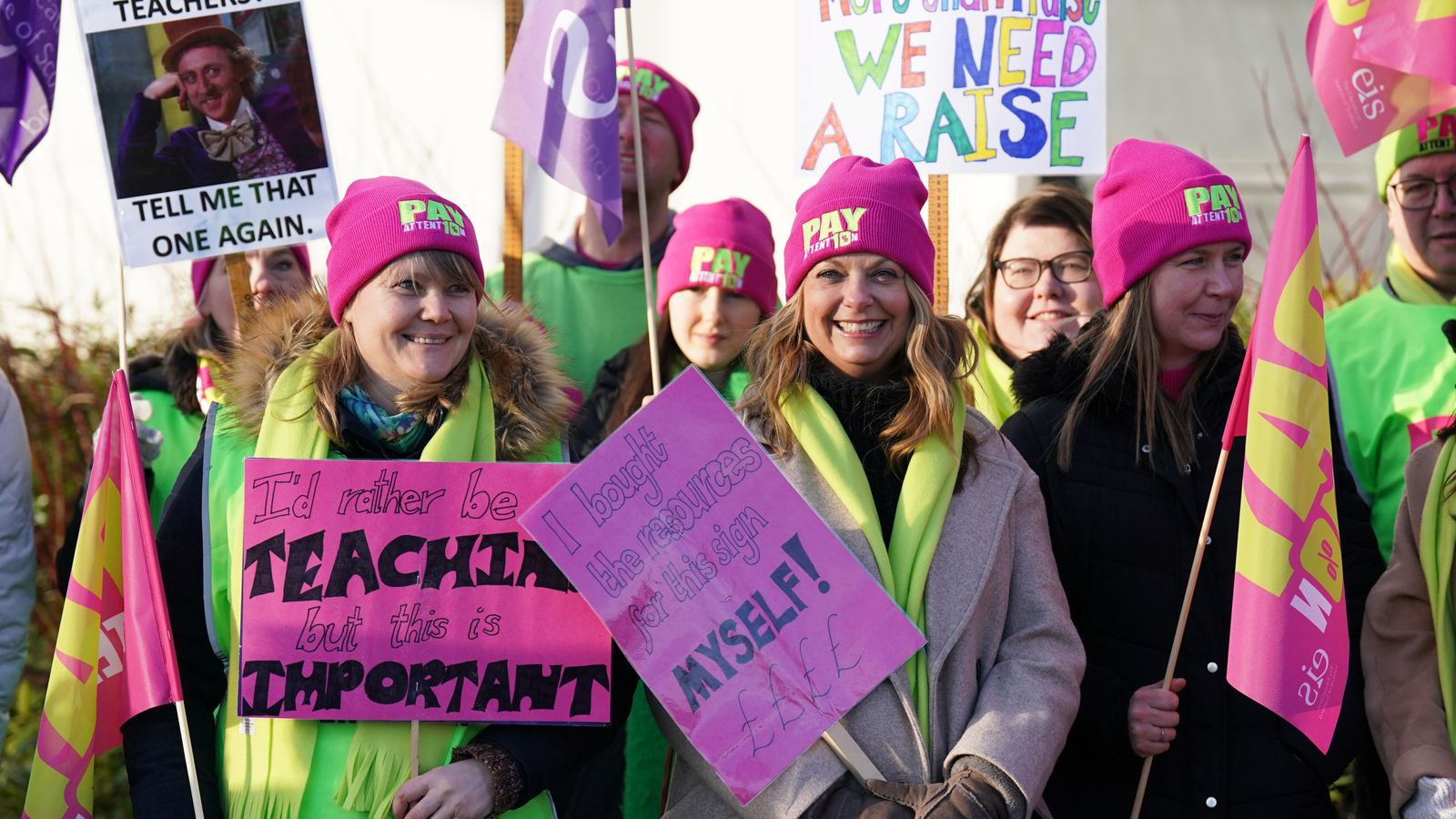Scotland’s largest teaching union has announced plans to target the constituencies of First Minister Nicola Sturgeon and her deputy John Swinney as part of escalating strike action.
The announcement to target the “key decision-makers” within the Scottish government and Convention of Scottish Local Authorities (COSLA) comes one year on from when the Educational Institute of Scotland (EIS) said it first submitted a claim for better pay.
As well as putting pressure on the first minister and deputy first minister, EIS declared that Education Secretary Shirley-Anne Somerville, Scottish Greens education spokesperson Ross Greer and Katie Hagmann, the resources spokesperson for COSLA, would also see industrial action in their areas.
The union’s General Secretary Andrea Bradley said: “It is deeply regrettable that the continuing inaction, obfuscation and spin from the Scottish government and COSLA on teachers’ pay has led to an escalation of our programme of strike action.
“It has now been a year since our pay claim was submitted, and teachers should have had their pay rise in their pay packet last April. Instead, the Scottish government and COSLA initially offered a pathetic 2% pay settlement – at a time when inflation was nearly four times that amount.
“Since then, the Scottish government and COSLA have dithered, delayed and dragged their feet while the cost of living has continued to soar.”
Where new strikes will target
The first minister represents Glasgow Southside, while the deputy first minister is the MSP for Perthshire North.
Ms Somerville is the MSP for Dunfermline, while Mr Greer represents the West Scotland region at Holyrood, but it is understood East Dunbartonshire will bear the brunt of the action.
On Tuesday, EIS said that four out of the five targeted areas – not including the Dumfries and Galloway ward of Councillor Hagmann due to an already planned holiday period – will see teacher walkouts for three consecutive days from 22 February.
Three further consecutive days of action will then take place in all five areas starting on 7 March.
This fresh action will be on top of planned national strikes on 28 February and 1 March, and a further 20 days of rolling industrial action across all local authority areas from 13 March.
EIS members have already taken part in three days of national strikes and a further 16 days of rolling action across the country.
Read more:
Teachers ‘won’t back down’ as councils warn of jobs risk
EIS argues there has been ‘plenty of talk but little action’
‘Financial reality’ hasn’t changed
Unions have rejected a pay offer which would see most teachers receive a 5% wage rise, although the lowest earners would get an increase of 6.85%.
EIS claims it amounts to a “9% real-terms pay cut” which will “never be acceptable”.
But the government argues the money is not there to match union demands.
Education Secretary Ms Somerville said: “We have been clear that a 10% pay increase for all teachers is unaffordable within the Scottish government’s fixed budget.
“We’ve also been very clear about the need to progress opportunities for compromise so we can reach a fair and sustainable settlement for all involved.
“Escalation of strike action by targeting pupils, parents and carers in certain parts of the country does not change the financial reality the government is operating in.”





